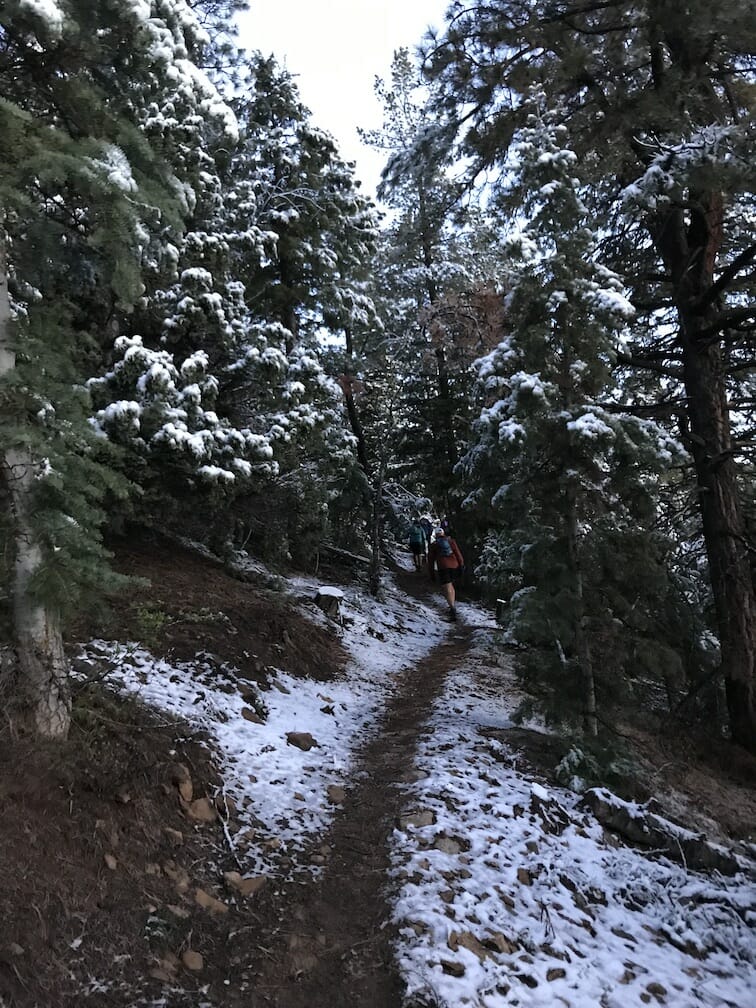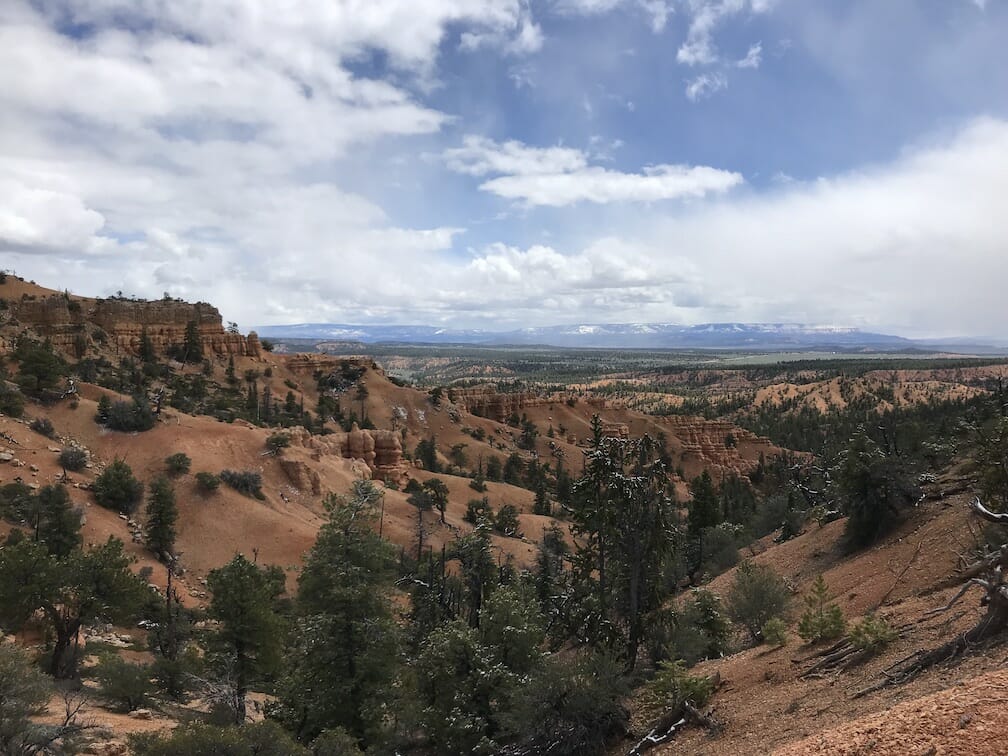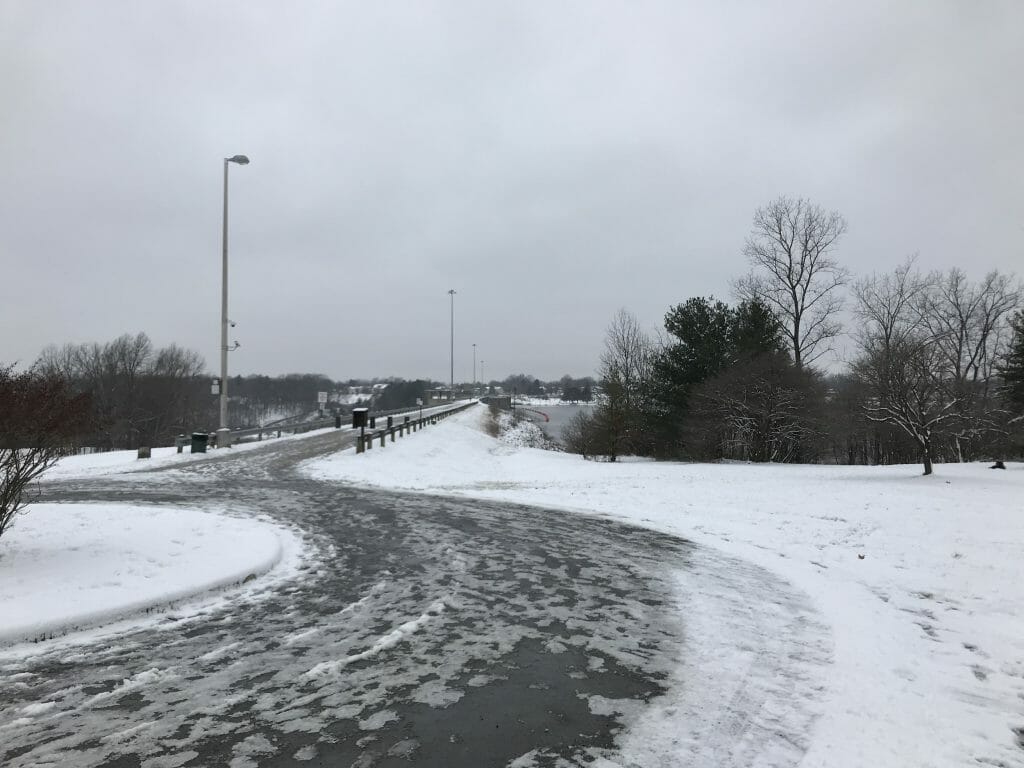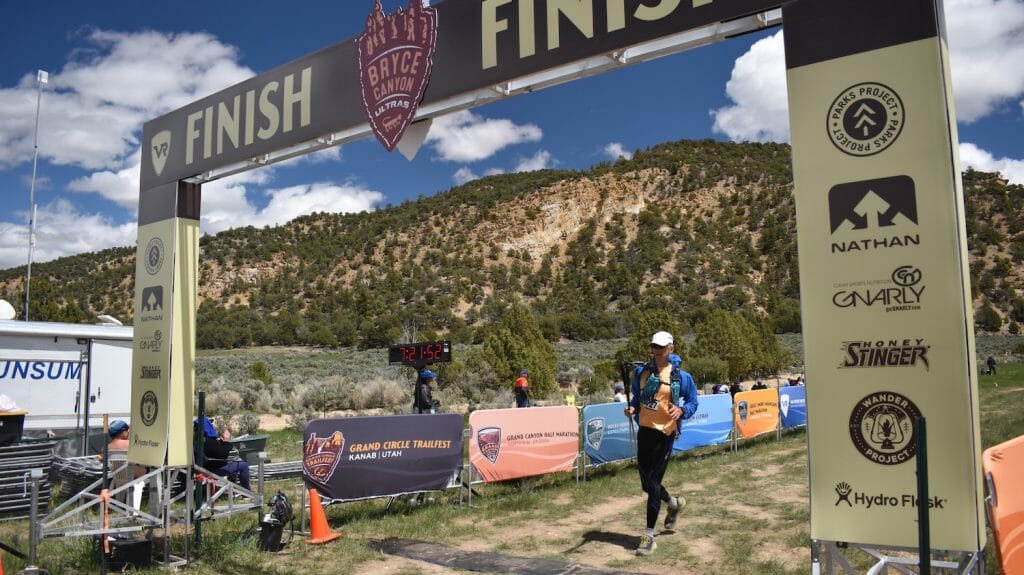“Go big or go home.” That’s what my youngest son said in January 2017 when we decided to do our first ultra-distance trail race. I was 62 years old, my son a spry 28.
I started running in 2015. I’m a competitive guy and I like taking on new challenges. I quickly ticked off a handful of road half marathons and one road marathon, all on top of my first love—rock climbing. Then rotator cuff surgery put my climbing on hold in late 2016, and I found myself needing something to do so I could keep drinking beer. My son suggested a 50K. We found one that would take place in Bryce Canyon on Father’s Day weekend.
Hot conditions made for a hard race, but we both got through. It took me 9 hours, my son around 8 hours. As tough as it was, I was hooked.
I signed up for my first 50-miler for the following February, the Antelope Canyon 50, also in Utah. My wife and I were set to retire at the beginning of 2018 and I wanted something to work toward. At the start of the year, we replaced the backseat of our Toyota RAV4 with a mattress platform and left our home in Columbus, Ohio, for a two-month road trip throughout the Desert Southwest. We lived out of the back of our car while I trained and raced.
Having survived our first trek together, we set out for a second one in the fall. That October, despite experiencing bad cramping during a second 50-miler in September, I opted to bump up from the 100K to the 100-mile distance at Arizona’s Javelina Jundred. Temperatures spiked into the 90s and I stuffed ice everywhere. Alone at sunrise a full 24 hours into the race, I paused to savor a mountain panorama. By then I knew I was going to clear the 30-hour cutoff. I finished in 27:43:46. My first 100-miler hadn’t gone perfectly, but already I wanted more.

Climbing amid a dusting of snow early in the Bryce Canyon 100.
Up to that point I’d been using a variety of ultra training plans to prepare for these events. They tended to focus on mileage over elevation gain. When I looked toward the Bryce Canyon 100 for the spring of 2019, I realized I needed some help with the uphill piece of the puzzle. Bryce’s daunting 14,200 feet of gain—and the lack of hills in Ohio—pushed me toward Uphill Athlete and Mike Foote’s 20-Week Big Vert Plan. I followed it as best I could as an old guy.
In the middle of January, just seven weeks in, I fell on some ice during a training run and banged my left knee. I got it X-rayed the next day. “I don’t see a crack in your patella,” the doctor told me. “But you could have a microcrack in there. You shouldn’t run for four weeks.”
Well, that’s not going to work, I thought.
Instead of backing off completely for a month, I came up with a compromise: I would walk my miles. I took one full week off, then for the next two weeks I did all my miles walking. It was so boring. I already hate running in the winter in Ohio (or really at any time of year in Ohio); walking in the winter in Ohio was even worse. I was signed up for a 50K in South Carolina just three weeks out from the injury. Armed with a brace and trekking poles, I got through the course’s 6,500 feet of gain without any pain in my knee.
Incorporating the necessary vert while at home was no easy feat. I spent quality time on the treadmills at the gym, and I became deeply familiar with an 80-foot driveway hill on the front of a nearby dam. When those got old, I’d drive about an hour south to a hillier park. I also ran that race in South Carolina and did another 50K outside Nashville, Tennessee. Even with pre- and post-race mini-tapers, I managed about 80 percent of the training program’s suggested mileage and elevation gain. I got through most of the muscular endurance while also focusing on remedial strength to address a problematic right hip.
It was easier to find hills once my wife and I embarked on our road trip in late March. We visited Capitol Reef National Park in Utah; Zion National Park for a 100K race; Prescott, Arizona, where we celebrated our 40th anniversary; and the Grand Canyon. I was thrilled to feel Mike’s plan come into play at Zion in April. The 50-miler I had done in September 2018 was similar in elevation gain and weather, but where I cramped up in the 50 and finished in just under 15 hours, I felt great at Zion and finished in 16:12—12 more miles in just 1 more hour.
Over these weeks in the Southwest, I was getting good training at an altitude similar to Bryce. Then my wife and I relocated to Sacramento and Yosemite for about a week and a half to cheer on our daughter-in-law in a trail half marathon and get in a little rock climbing. I loved the family time, but it set me back in terms of acclimatization.

Along the Thunder Mountain Trail between Coyote Hollow and Red Canyon, about 7 hours into the Bryce Canyon 100.
We arrived in Bryce the Monday before the race. The organizers had to alter the course due to road-access issues caused by a late snowpack. What was going to be a long lollipop loop became two laps of the 50-mile course. I welcomed the change: It would reduce the overall gain to 13,800 feet, and I would become familiar with the loop on the first lap. We’d also go through Red Canyon, the prettiest section, twice.
The race got going at 5 a.m. Friday morning. The sun rose as I reached the 8,500-foot high point, lighting up a dusting of snow on the trees and the surrounding rocks. It was a beautiful slice of winter wonderland—in the middle of May. I finished the first 50 miles in 14 hours and felt surprisingly good. In retrospect, I started out too fast. The second lap was a different story.
Night fell as I approached the high point for the second time. The temperature dropped into the low 20s. Between the cold and the elevation, I had difficulty catching my breath. I had no choice but to power-hike. Even under a heavier top and a wind shirt, my arms froze. The movie version of Touching the Void filtered into my thoughts. I joke with friends now that while I didn’t touch the void, I think I glimpsed it.
My wife was at the aid station at mile 69. I shivered my way over to her. “I’m a popsicle,” I said. She handed me another set of pants, an additional shirt, and my lightweight puffy jacket. The extra clothes, a space heater in the aid station tent, and some real food (eggs and a tortilla) helped warm me up. I had made the mistake of packing only gels, which were not at all appealing in freezing conditions.
Thirty minutes passed. It was 1 a.m. and I was reluctant to head back out into the night.
“You’ve got this,” my wife said. “You look better than a lot of the other people going through here. There are runners in the tent who came in before you and still haven’t left.” I had told her before the race started that at some point she would have to kick me out of an aid station; I wouldn’t want to go. This was her nice way of kicking me out. She gave me a big hug and it took everything I had to leave her warmth.
Back in the cold, I focused on managing the remainder of my race. Thanks to Mike Foote’s vert plan, I still had legs in me going uphill. I was able to enjoy my second brush with Red Canyon, which involves about 1,500 feet of climbing along a 5-mile loop. Running in the hoodoos in the sunshine was so gorgeous—those reds and oranges, the formations so close you could reach out and touch them.

A typical winter run in Ohio.
Even near the end, around mile 96 where you hit these two huge climbs—pretty much straight up, no switchbacks, just super technical—I never had to stop. I was able to shorten my stride and power-hike up them. The legs were still there. I had only one thought at that point: Don’t fall. I knew I was going to finish. I was going to beat the 36-hour cutoff.
I crossed the line in 33:20. Given that nearly half of the 108 runners who started didn’t finish, I felt pretty good about making it through with time to spare.
Another product of the training was that my recovery from Bryce was much faster than from Javelina. The same day I finished Javelina, I nearly passed out in a Carl’s Jr. bathroom. Then a swollen ankle kept me from running for an entire month. After Bryce, I experienced a sharp pain on the inside of my right knee, unrelated to the earlier training-run fall on the ice. It turned out to be tightness that just needed to be rolled out. Once I got that and my stiff hips in order, it was two short weeks before I was able to run again.
I’m currently trying to ease back into rock climbing via two Uphill Athlete plans. Even if I end up climbing more this year, I’ll put in my one ticket for Western States. I’m also eyeing a 100-miler in Eastern Washington in March 2020, which my son said he’d pace me at. I’d love to experience another ultra with him.
It would be easy to fixate on the ticking of my age clock, but instead I choose to live as fully as my body lets me. During a recent muggy run in Ohio, I met a 79-year-old man who was running as well. We got to talking and it turned out he had started running at age 55 and is a four-time finisher of the Boston Marathon. He “only” races 10Ks now. He had some advice for me that really hit home: “Keep moving and do everything with intent and intensity.”
Roger that. Sometimes running in Ohio can be inspiring.
-by Uphill Athlete Rick Stokes
You might also like:
Heart Rate Drift: A Functional Measure of Fitness
30/30 Interval Training and the Need for Speed
Unlocking the 100-Mile Mystery at Cascade Crest


1 Comment
Pingback: Ultramarathon Daily News | Wednesday, July 17 | Ultrarunnerpodcast.com